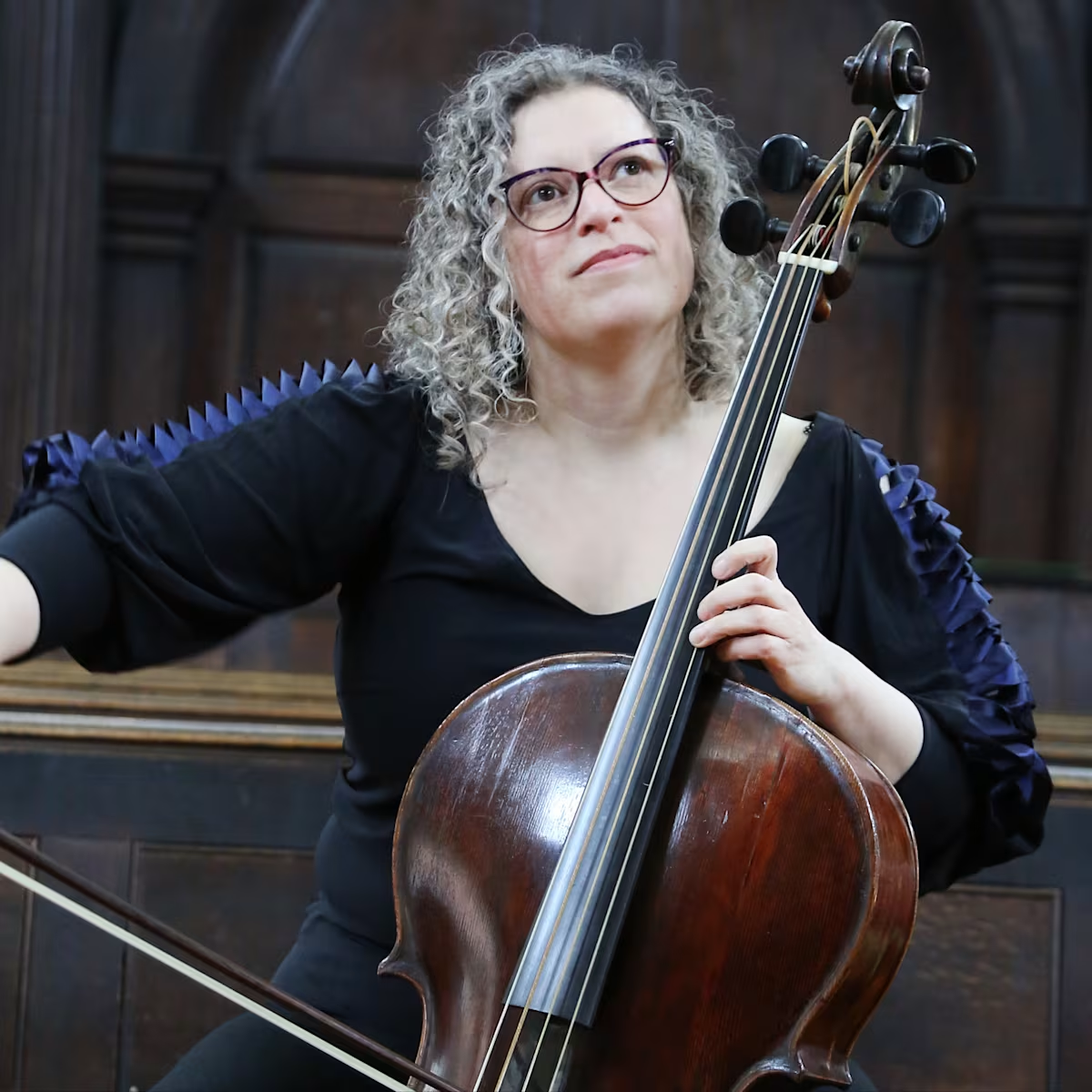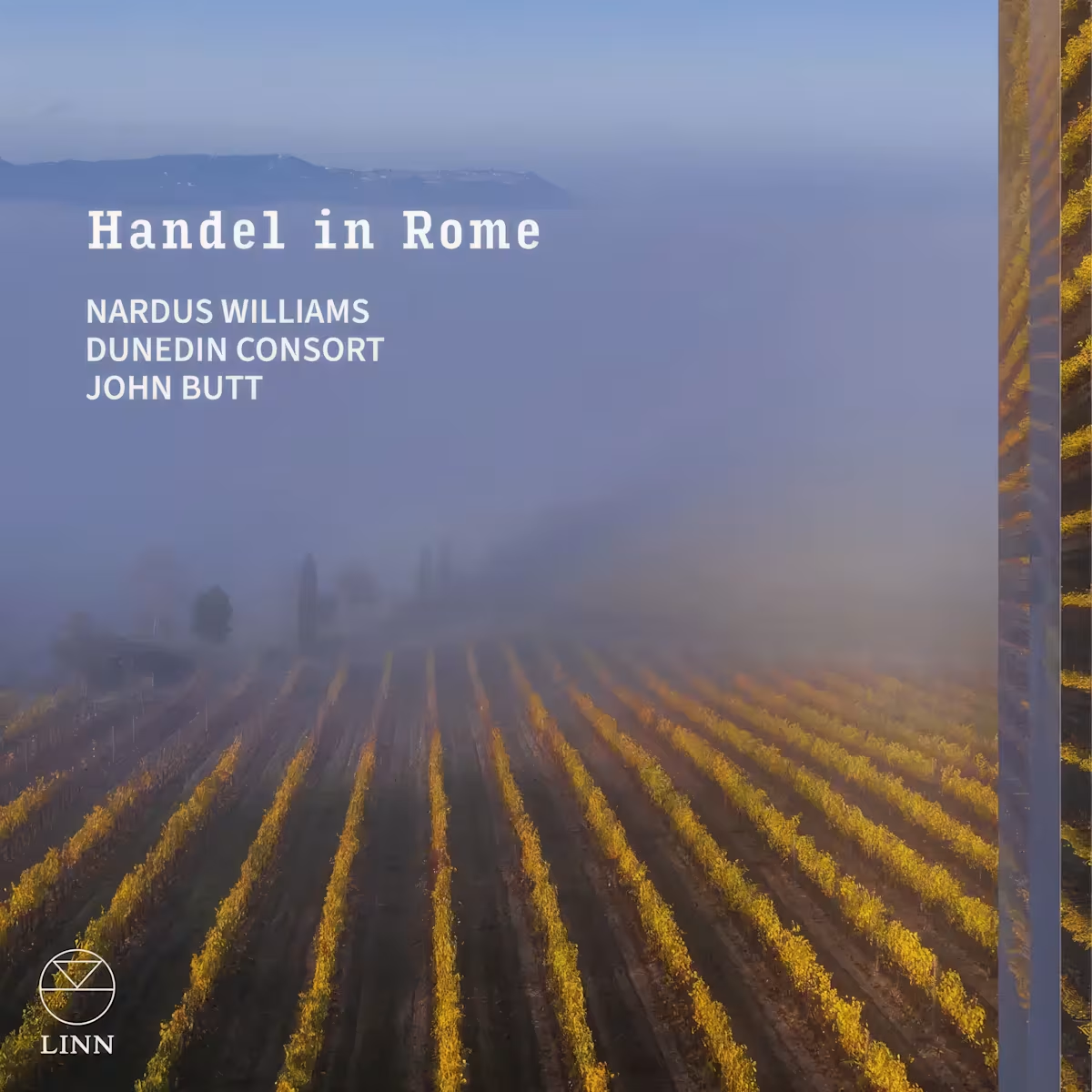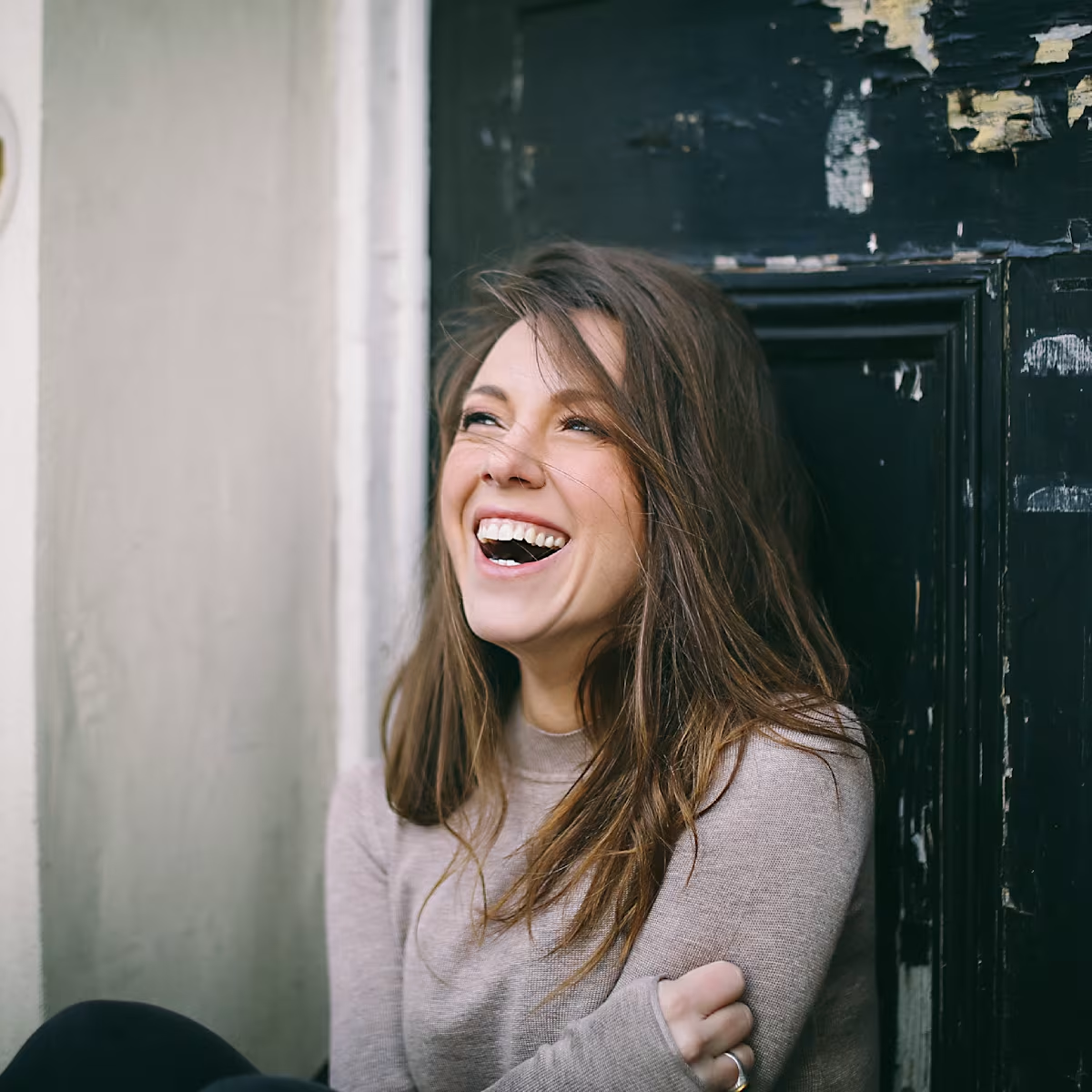Feature
Davina Clarke and ‘The Art of Obligato’
Share this

Continuo Connect recently sat down with Davina Clarke to talk about recording Handel, Bach, and her exploration of the world of ‘obligato’.
Davina released her debut solo album Sweet Stillness in 2022, in collaboration with Mary Bevan. The album features Handel’s 'Neun Deutsche Arien' or 'Nine German Arias' and two of his violin sonatas, all of which involved some aspect of the Baroque compositional practice known as obligato. The story of how that album and its follow-up - Davina’s forthcoming Bach album, The Art of Obligato - were created is fascinating and revealing.
First things first: obligato
It’s worth understanding what obligato means before we dive in further, however - and why it means so much to Davina!
In Baroque music (i.e. of the late 17th and early 18th centuries), music was often performed with one or more soloists and a “band” of accompanists. This “band” - or continuo group to use the correct term - would consist of one or more single-line bass instrument players (for example, cello or bassoon) and one or more players of instruments capable of playing chords (such as the harpsichord, organ, or lute). The bass players play the basso (or bassline), and the chordal instrumentalists improvise over the top, basing their performance on harmony indicated by the composer in the form of figures (numbers and symbols). You might hear the term “figured bass”, which refers to exactly this.
Later in history, from around the middle of the 18th century, the accompanying music was written out in full, and improvisation in a continuo group began to disappear as the Classical era took shape. The transition between the two modes of performance arose thanks to composers seeking to become ever more precise about their intentions, and the technique of obligato is an early form of this.
The term obligato, as you might guess, is related to the English word “obligatory”, and the meaning is similar. It refers to music that one is obliged to play as-is, without improvisation. To the modern listener this might seem an unusual thing to have to specify! But as music became more complex during the Baroque era, and in particular as multiple simultaneous musical lines needed to work perfectly together, it became important for the precise notes to be set down in writing, rather than relying on the (considerable) improvisational skills of the players. One might hear, for example, a chorale melody along with a different melody (a famous example of this is J.S. Bach's “Sleepers, wake!” cantata [Wachet auf, ruft uns die Stimme, BWV 140], e.g. as performed by Anneke Scott on her corno da tirarsi with the obligato and bassline in the organ, and chorale melody on the horn). The essential point is that the obligato line is written out by the composer and not improvised over the bassline.
Here's an example from Davina Clarke and Mary Bevan, with the title track from her debut album, in Handel's 'Süße Stille, sanfte Quelle'. Here you can hear Davina's violin on the obligato line intertwined with Mary Bevan's vocal performance:
Sweet Stillness
Back to Davina’s Sweet Stillness album: the arias all feature an obligato violin part working in tandem with Mary Bevan’s soprano line, and two violin sonatas that have been firm favourites in Davina's recital programmes over the years. The centrepiece of the album, however, for Davina, is the beautiful marriage of vocal and string lines.
As a child, Davina loved to sing - from a young age performing in children's operas, chamber choirs, and many musicals, alongside learning the violin. It was a tricky decision for her as to whether she would pursue her musical career as a singer or violinist! As a professional musician (she chose the violin, obviously), she still particularly loves to work with singers - and it was during her time with the English Baroque Soloists, Sir John Eliot Gardiner, and the Monteverdi Choir, that her love of the obligato style was forged. Gardiner was a hugely important mentor to Davina - he chose her as an apprentice to the English Baroque Soloists in 2012 - and they worked closely together, in particular on Bach’s cantatas. Davina describes the synergy between choir and orchestra:
“It’s extremely strong - mutual appreciation and admiration - we learn so much from each other. The choir observe our bow strokes, for example, to match their diction, and vice-versa, the orchestra takes equal musical direction from the text and the precise way the choir sings it”.
When Gardiner invited Davina to join a trip to New York for the launch of his 2014 book on Bach, Music in the Castle of Heaven, she was naturally delighted. The book launch took the form of half a dozen performance-lectures, in which John Eliot would read extracts from the book, and Davina, along with a singer and continuo team, would demonstrate using Bach’s cantata arias. This was where the seeds were planted for both Sweet Stillness and Davina’s new album, The Art of Obligato.
For Davina, the Handel album was almost a prequel to the new Bach album. She hadn’t felt quite ready to tackle Bach for her first disc, as for her (and for us and many others too!) he’s the “master and king of all Baroque music”. Moreover, there weren’t many recent recordings of Handel’s 'Nine German Arias', and she and Mary felt this would be a perfect way to further their exploration of Handel's works and his use of obligato in them. The Handel experience was revelatory, and once Davina had “unlocked and unleashed the obligato beast within”(!), she simply had to begin work on the Bach album.
Immense preparation, and a team
The process of creating an album like The Art of Obligato is long (taking perhaps a year or more) and at times difficult, requiring the utmost of those involved as musicians. Davina describes the amount of preparation as “immense”, and very different to preparing for a live concert. The music must be fully known inside and out, and Davina stresses the importance of coming with strong, interpretative musical ideas; these can of course come to you in the recording sessions, but you have to be sufficiently prepared, open, and confident for that to happen, requiring - at a minimum - a complete mastery of the music. These ideas reflect the performer’s mood and personality, but in a recording, they are locked down forever - unlike in a live performance in which the moment is fleeting. Davina compares it to looking at photos from the past - “why did I wear that?!?” - in a recording, you will have to live with your musical decisions forever!
The Art of Obligato was recorded over five days during the Autumn of 2023, and Davina took a fortnight of isolated, intense preparation prior to the sessions. For her this was vital - no distractions - and while for the first few days she sometimes felt that she’d not got much done, she was nonetheless, crucially, “in the zone”.
Davina, thus prepared, joined the rest of her team at the recording sessions, which took place at the VOCES8 Centre at St Anne & St Agnes Church in London. Her long-time collaborators are all close friends too. Adrian Peacock is the producer, and clearly a source of deep inspiration to Davina and her ensemble, and a vital presence throughout the recording process. Her fellow soloists on the album are Nick Pritchard (tenor) and Hugh Cutting (counter tenor) - well known to Davina from her time with the English Baroque Soloists, Academy of Ancient Music, and the English Concert - and providing a different set of timbres to Mary Bevan’s soprano voice in Sweet Stillness. The continuo group is a new ensemble formed by Davina - named, you guessed it! Obligato - Tom Foster (harpsichord), Alex Rolton (cello), and Sergio Bucheli (theorbo).
Davina was joined at the sessions by Kati Debretzeni, a significant mentor and teacher throughout Davina’s time as an apprentice with the English Baroque Soloists (which Kati leads). The two violinists joined forces with Nick Pritchard for ‘Gott ist mein Freund’, (BWV 139, for two obligato violins and tenor). It was also, for Davina, deeply meaningful to be joined by Kati, given the origins of their musical friendship.

During the sessions they also had a language coach, Hildburg Williams, formerly both a violinist with the English Baroque Soloists and a language coach at ENO, the Royal Opera House, and others. She therefore brings a deep understanding of the intricacies of both the violin writing and the text. Hildburg was Davina's first desk partner at English Baroque Soloists when Davina joined the ensemble, and in many ways it felt to Davina like having a “godmother” there to guide her, to oversee the music and text of this new recording.
Team assembled, then, what happens behind the closed doors of the recording sessions? All was revealed to Continuo Connect…
The crux: in the studio
First, the piece being recorded that day is rehearsed in some detail, and then performed two or three times in order to become fully comfortable. During these initial run-throughs, the sound engineer prepares the microphones and alters their position for a perfect balance. Adrian (the producer) sits with the sound engineer in the control room, from which he can see and hear the performers, and can communicate with them.
Once they are comfortable with the interpretation, they do one or two play-throughs as recorded “takes”, then join the producer and sound engineer in the control room and listen through with headphones and the score. This gives them a good sense of what they need to do next; they are listening for projection, balance, articulation, the overall shape of the work - the phrasing, lengths, shape, how the “story” of the piece is delivered - but they have to disregard (for now!) any wrong notes or odd timings. It’s during these listen-throughs that the producer is especially valuable, as Davina describes:
“Adrian is fantastic. He’s very knowledgeable about the subject - continuo, realisation of figures, the bassline. A producer who is very conscious of what’s going on underneath is really important. He spots things, gives us really helpful ideas - “get into the string more, how about being more contemplative here, how about a slower bow, bring this out…” And we are all great friends - there’s a lot of trust and mutual appreciation.”
Decisions are then taken about exactly how the final recording will be made. The piece is split into several sections in order to concentrate and focus their energy, and each section is recorded several times. There will be rapid, detailed feedback from the producer - “the F sharp in bar 10 needs to be higher” for example - but once he says he’s got everything, they move on.
The music isn't necessarily recorded strictly in sequence from start to finish. Sometimes a section of music is repeated later in the piece, and in these cases they might record both sections together for a more unified approach to the work. Overall there may be many takes of each section - 40 or 50! - and in a Baroque recording, Davina says, you have to do “big chunks” due to the free-flowing improvisation in the continuo group; while you might isolate a short section for detailed work, you could never “drop in” a single fixed note.
The sessions always finish at a civilised hour, perhaps 7pm or 8pm; not for Davina the rock-and-roll of all-night recording sessions! One thing she always does at the end of a day is to provide everyone with a gin and tonic, to unwind together after all the hard work while the recording equipment is packed away. Unsurprisingly, perhaps, she notes that this is very good for morale!

Finishing touches
Once the recording sessions have been completed, there’s still a lot of work to be done before a finished record can be released. The producer takes the raw recordings away and assembles all the good takes and sends these “edits” to Davina. She goes through with her score and makes notes on everything that could potentially be improved - for example “bar 2 is not together”, “bar 3 is messy”, “bar 5 needs a lower G” - and sends her notes back to the producer. He will then try to find another take of each section in question, and put together another edit. Once everyone is happy with the final edits, the sound engineer will “treat” them: adjust the levels of each instrument, add a touch of reverb, EQ, and balance, so every instrument sounds its best.
Then - finally! - she receives the master recording! At this point, Davina relates, more hard work: meeting the graphic designer, designing the cover, planning the album booklet, writing all of the material, checking all the credits, deciding on packaging… and ensuring everything is ready for release on the various digital platforms such as Spotify and iTunes.

The final repertoire on The Art of Obligato consists of seven arias (three each for tenor and alto, and one featuring both), and two violin sonatas, one with continuo accompaniment and the other with specifically obligato keyboard accompaniment.
“Halleluja, Stärk und Macht” (Wir danken dir, Gott, wir danken dir, BWV 29)
“Ich will nach dem Himmel zu” (Wir müssen durch viel Trübsal, BWV 146)
Sonata in G Major, BWV 2021
“Christi Glieder, ach bedenket” (Bereitet die Wege, bereitet die Bahn, BWV 132)
“Gott ist mein Freund” (Wohl dem, der sich auf seinen Gott, BWV 139)
“Mich kann kein Zweifel stören” (Es ist euch gut, daß ich hingehe, BWV 108)
Sonata No. 3 in E Major, BWV 1016
“Lobe den Herren” (Lobe den Herren, den mächtigen König der Ehren, BWV 137)
“Ich furchte zwar” (Erfreut euch, ihr Herzen, BWV 66)
This interview may not be as strenuous as the exhausting process of creating Davina’s The Art of Obligato, but we are nonetheless very grateful to her for taking the time to share her story with us—and, through us, with you. We look forward to hearing the finished record and enjoying it even more, knowing the love, care, and attention to detail that went into its making!
The single of the Adagio from Bach: Sonata No. 3 in E Major, BWV 1016, performed by Davina Clarke & Tom Foster, is available to stream now on Spotify and Apple Music.
‘The Art of Obligato’ will be released in November 2024 and was supported by a grant from Continuo Foundation.
Share this
Keep reading

The Reverent Paraphrase
Kate Bennett Wadsworth discusses her chamber arrangement of Schumann's Cello Concerto, and reflects on her recording with the Consone Quartet.

Handel In Rome
Handel in Rome features Nardus Williams & Dunedin Consort performing three Italian cantatas, showcasing Handel’s early Roman period under John Butt's direction.

In conversation: Mary Bevan
Continuo Connect meets soprano Mary Bevan, internationally renowned in baroque, classical and contemporary music.



